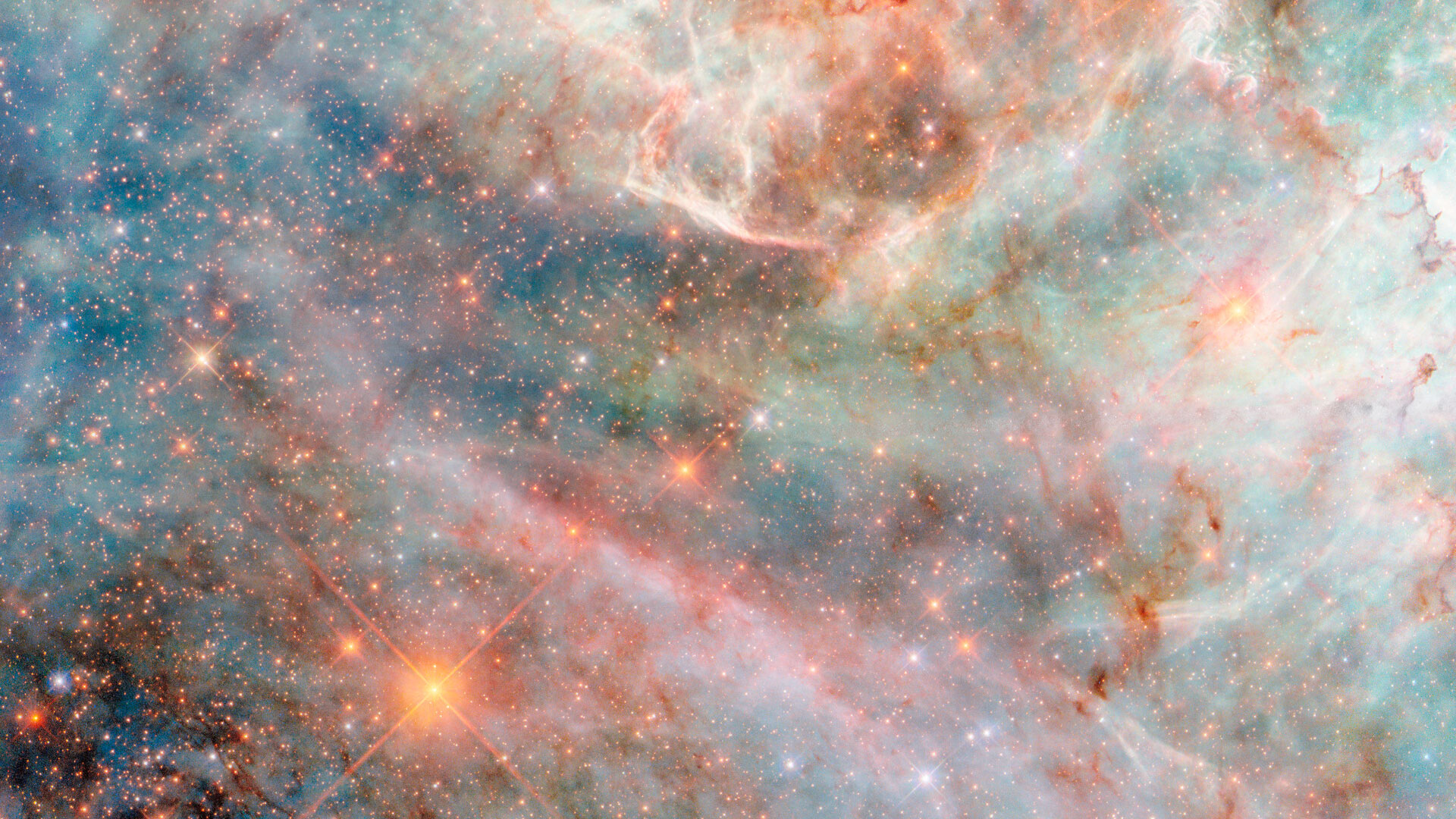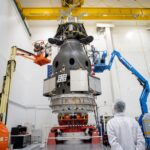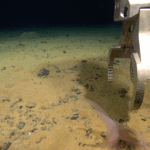Now Reading: Hubble captures ‘candyfloss’ clouds | Space photo of the day for May 13, 2025
-
01
Hubble captures ‘candyfloss’ clouds | Space photo of the day for May 13, 2025
Hubble captures ‘candyfloss’ clouds | Space photo of the day for May 13, 2025


What might look like sparkling wisps of candy floss, or cotton candy, are dusty gas clouds in the Large Magellanic Cloud, a dwarf galaxy, as imaged by the Hubble Space Telescope. The pink, blue and green colors are not only beautiful to look at but can inform the viewer about the many wavelengths that comprise this photo.
What is it?
A part of a nebula in a dwarf galaxy called the Large Magellanic Cloud, the photo by the Hubble Space Telescope shows a gas cloud strewn in front of a star field.
This type of view is made possible by Hubble’s cameras, including the Wide Field Camera 3 (WFC3) that was used to collect the observations for this image. WFC3 has a variety of filters, each of which lets through only specific wavelengths, or colors, of light.
This image combines observations made with five of WFC3’s different filters, including some that capture ultraviolet and infrared light that are outside the field of vision for the human eye.
Where is it?
The Large Magellanic Cloud is located 160,000 light-years from Earth in the constellations Dorado and Mensa. It is the largest of the Milky Way’s many small satellite galaxies.
Why is it amazing?
People often wonder if the colors depicted in photos like these match what humans would see if they were to travel to the location.
The specialists who process Hubble’s images combine the telescope’s raw data to compose multi-colored images like this one. To do so, they assign a color to each wavelength filter. Visible-light observations are typically matched to the color that the filter allows through. As such, shorter wavelengths of light, such as ultraviolet, are usually colored in blue or purple hues, while longer wavelengths, like infrared, are typically shown in shades of red.
This way, the images stay close to reality while adding in new information from the portions of the electromagnetic spectrum that humans cannot see with our eyes alone.
Want to know more?
You can read more about the Large Magellanic Cloud and the Hubble Space Telescope. You can also learn more about how Hubble Space Telescope images are made.
Stay Informed With the Latest & Most Important News
Previous Post
Next Post
-
 012024 in Review: Highlights from NASA in Silicon Valley
012024 in Review: Highlights from NASA in Silicon Valley -
 02Panasonic Leica Summilux DG 15mm f/1.7 ASPH review
02Panasonic Leica Summilux DG 15mm f/1.7 ASPH review -
 03From Polymerization-Enabled Folding and Assembly to Chemical Evolution: Key Processes for Emergence of Functional Polymers in the Origin of Life
03From Polymerization-Enabled Folding and Assembly to Chemical Evolution: Key Processes for Emergence of Functional Polymers in the Origin of Life -
 04How New NASA, India Earth Satellite NISAR Will See Earth
04How New NASA, India Earth Satellite NISAR Will See Earth -
 05And Thus Begins A New Year For Life On Earth
05And Thus Begins A New Year For Life On Earth -
 06Astronomy Activation Ambassadors: A New Era
06Astronomy Activation Ambassadors: A New Era -
07SpaceX launch surge helps set new global launch record in 2024




















